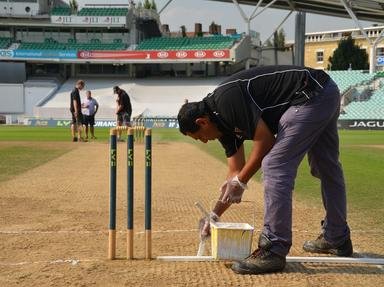Quiz Answer Key and Fun Facts
1. The first-ever tied Test was played 9-14 December, 1960 in Brisbane between Australia and West Indies. Who was the only player to score 50 runs or more in both innings for his team?
2. In Test Match No: 515 played in December 1961, Durban between South Africa and New Zealand there were a number of players making their Test debuts. Of the 22 players named in the two teams how many were making their Test debut in this match?
3. Who was the first Indian captain to lead his side to a series win against England in the 1960s?
4. In the 2nd Test at Lords in 1963 between England and the West Indies, with England 9/228 and needing 6 runs off the final over and West Indies needing one wicket to win, Colin Cowdrey came to the wicket with his broken arm in plaster with 2 balls remaining to end the match. Who successfully played out the two deliveries to secure a draw?
5. During the period 1960-1969 which batsman scored the most Test runs?
6. There were only two cricketers that took a hat-trick during the 1960s in Test cricket. One of these was Lance Gibbs (WI). Who was the other cricketer?
7. For the first time in Test history a batsman batted on all five days of a Test match. Who was the person who achieved this feat in January 1960?
8. In 1967 a Test batsman scored 246 runs in one innings but was dropped for the next Test. Who was this batsman?
9. The 1,000th Test century was scored in Melbourne on the 27th December 1968. Who was the batsman?
10. This batsman started his Test career in 1969 and although he wore spectacles he was the second player to score his 100th first-class century in a Test match. Who was this batsman who played Test cricket from 1969-1984?
Source: Author
zambesi
This quiz was reviewed by FunTrivia editor
gtho4 before going online.
Any errors found in FunTrivia content are routinely corrected through our feedback system.

